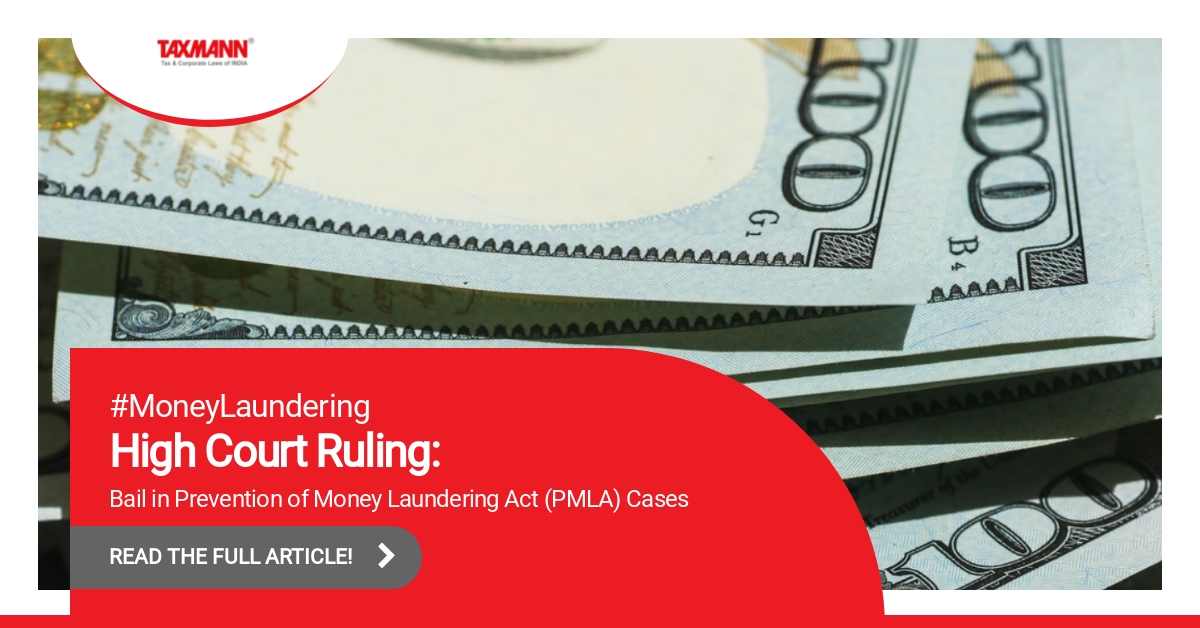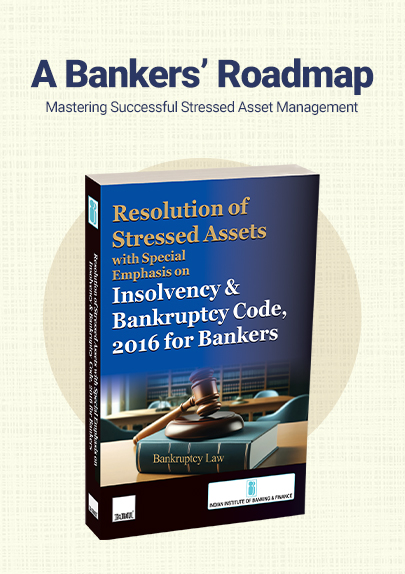Bail in Prevention of Money Laundering Act (PMLA) Cases
- Blog|News|FEMA & Banking|
- 3 Min Read
- By Taxmann
- |
- Last Updated on 14 March, 2022
Case Details: Gautam Thapar v. Directorate of Enforcement - [2022] 136 taxmann.com 77 (Delhi)
Judiciary and Counsel Details
-
-
Manoj Kumar Ohri, J.
- Mukul Rohatgi, Sr. Adv. Sandeep Kapur, Virinder Pal Singh Sandhu, Vivek Suri, Ms. Niharika Karanjawala, Abhimanshu Dhyani, Sahil Modi and Ms. Kajal, Advs. for the Petitioner.
- Amit Mahajan, CGSC and Kritagya Kumar Kait, Adv. for the Respondent.
-
Facts of the Case
In the instant case, an application was filed u/s 439 of Cr.P.C seeking regular bail in a complaint case filed under section 44/45 of the Prevention of Money Laundering Act, 2002.
The case of the prosecution was that subsequent to the removal of then MD and CEO of Yes Bank Ltd., certain complaints were filed assailing his role in grant of various credit facilities to borrowers, in violation of banking norms and against receipt of illegal gratification, which resulted in huge loss to the Bank. One of these complaints was in relation to M/s. Oyster Buildwell Pvt. Ltd. ( ‘OBPL’), a real estate company, which was extended credit facilities to the tune of Rs.514.27 crores, resulting in loss of Rs.466.51 crores to the Bank.
As per the Complaint certain Bank officials colluded with the applicant for the grant of Term loan, which was ostensibly obtained by M/s. Oyster Buildwell Pvt. Ltd. ( ‘OBPL’), to furnish security deposit in favor of Jhabua Power and Investments Limited (JPIL), however in reality, the same was sought with malafide intentions to be siphoned off and diverted towards repayment of facilities availed of by Avantha Group companies and for meeting other expenses. The Bank was fully aware of the real purpose for which the loan was obtained. Reportedly, public money under the garb of Term loan was siphoned off in this way, resulting in generation of ‘proceeds of crime’ as well as its layering and ultimate projection as untainted money.
As a result, the complaint was registered under Sections 120B/406/420/468/471 by the CBI against OBPL, the applicant, and others, for having committed criminal breach of trust, cheating, criminal conspiracy, and forgery for diversion/misappropriation of the public money during the period from 2017 to 2019. The investigation in the case is stated to be still pending. The defendant applied for bail.
High Court Held
The High Court observed that bail can be granted to a money-laundering accused only if the twin conditions u/s 45(1) of PMLA are satisfied. Twin conditions for granting bail are – (i) that the Public Prosecutor shall be allowed to oppose the application for release, and (ii) where the Public Prosecutor opposes such application, the Court should be satisfied that there are reasonable grounds for believing that the accused is not guilty of the offence and that he is not likely to commit any offence while on bail.
The Court stated that these twin parameters should be considered while granting bail to a money laundering accused apart from aspects to be considered in matters of regular bail under section 439 Cr.P.C.. For granting regular bail under section 439 Cr.P.C., a Court must consider aspects, including but not limited to, the larger interest of the State or public, whether the accused is a flight risk, whether there is likelihood of his tampering with evidence, whether there is likelihood of his influencing witnesses, etc. Apart from these, another factor relevant to the question of bail would be the gravity of the alleged offence and/or nature of the allegations levelled, which may serve as an additional test and can be applied while keeping in view the severity of the punishment that the offence entails.
The limitations so imposed were in addition to those imposed under Cr.P.C. and had an overriding effect over the provisions of the Code, in case there occurred any inconsistency between the provisions of the two. Though stringent, they were held by the Supreme Court to be mandatory. Apart from these, another factor relevant to the question of bail would be the gravity of the alleged offence and/or nature of the allegations levelled, which may serve as an additional test and can be applied while keeping in view the severity of the punishment that the offence entails.
On prima facie reading of the material placed on record and considering the parameters of Section 45(1) PMLA as well as the gravity of the alleged offences, the High Court observed that it cannot be held that the applicant was not guilty of the alleged offences or that he was not likely to commit any such offence while on bail and accordingly dismissed the bail application.
Disclaimer: The content/information published on the website is only for general information of the user and shall not be construed as legal advice. While the Taxmann has exercised reasonable efforts to ensure the veracity of information/content published, Taxmann shall be under no liability in any manner whatsoever for incorrect information, if any.

Taxmann Publications has a dedicated in-house Research & Editorial Team. This team consists of a team of Chartered Accountants, Company Secretaries, and Lawyers. This team works under the guidance and supervision of editor-in-chief Mr Rakesh Bhargava.
The Research and Editorial Team is responsible for developing reliable and accurate content for the readers. The team follows the six-sigma approach to achieve the benchmark of zero error in its publications and research platforms. The team ensures that the following publication guidelines are thoroughly followed while developing the content:
- The statutory material is obtained only from the authorized and reliable sources
- All the latest developments in the judicial and legislative fields are covered
- Prepare the analytical write-ups on current, controversial, and important issues to help the readers to understand the concept and its implications
- Every content published by Taxmann is complete, accurate and lucid
- All evidence-based statements are supported with proper reference to Section, Circular No., Notification No. or citations
- The golden rules of grammar, style and consistency are thoroughly followed
- Font and size that’s easy to read and remain consistent across all imprint and digital publications are applied





 CA | CS | CMA
CA | CS | CMA


